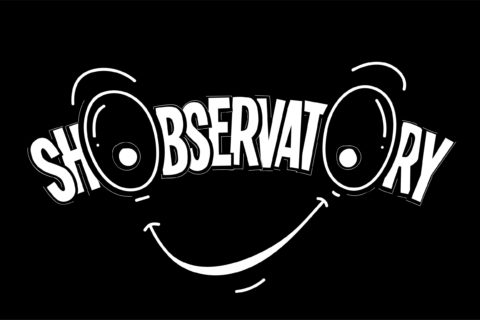
We talk to David Broscow, Vice President, Data Science & Analytics at marketing and advertising company Innocean. He tells us how predictive and prescriptive analytics help the agency’s key clients differentiate from competitors.
David Broscow considers himself a marketing practitioner. From an early age, he was impressed with simple but well thought out computer solutions that tackled large challenges. “During my tenure at Toyota Motor Sales, I was fortunate to be part of the team that launched the first B2C.com site for automotive customers. We learned how people gather information to support purchasing a vehicle, one of their biggest decisions in a 3-7 year timespan.” This sparked his interest in marketing personalization and the desire to build a home-grown CRM platform within the confines of a 12 x 12 office in Torrance, California. “Data Science is an invaluable profession in today’s world, because our ultimate goal is to be the best at predicting and timing the needs of a customer base. Those needs are typically a combination of great products and services combined with exceptional customer experience.”
Beyond sizzle
One year ago, Broscow decided to join California-based marketing and advertising company Innocean, for a new challenge. “Our CEO, Steve Jun, understood that many advertising agencies go deep in descriptive analytics, but few pursue predictive or prescriptive analytics. Our three largest clients, Hyundai, Genesis and Kia, build some of the best vehicles in the US marketplace. In order to differentiate them from the J3 – Toyota, Honda, Nissan – we need to compete through a personalized customer experience. In an era of purchase incentives and large global inventories, good product marketing is considered blocking and tackling. We have a real opportunity to excel in CX (customer experience, ed.) through each owner’s lifetime.” In order to accomplish this, Innocean is beginning to establish strategic partnerships with companies such as Marketing Evolution. The objective, Broscow continues, is to understand the impact throughout the purchase and ownership cycle: Awareness, Consideration, Intent, Purchase and Advocacy. “The biggest opportunity is in optimizing our efforts against key performance drivers such as sales, brand awareness and experience.”
Innocean promises not to stop at advertising, and to ‘discover beyond’. Broscow clarifies what this means in practice. “There is an ocean’s worth of knowledge, much of it uncharted and much of it lying well beneath the visible surface.” This year, the agency produced one of the Super Bowl’s strongest advertisement, featuring the 2020 Hyundai Sonata, and the innovative new ‘Smaht Pahk’ feature. “Our objectives went well beyond sizzle and viewership. We wanted to showcase the company’s focus on industry-leading technology. As automakers compete less on product quality, differentiated features and benefits become more critical anchor points for a brand.” Hyundai, in partnership with Innocean, will therefore be personalizing the shopping experience across .com, social, search, online, out-of-home and addressable TV. These coordinated efforts are data-informed and started well before the Superbowl ad ever aired on 2 February.
Predicting success
Earlier, Broscow worked at Catalina Marketing, focusing on consumer-packaged goods (CPG). He found it a fascinating industry, and much different from automotive. “In supermarket, drug, mass and club retailers, a single household may make between two to five visits per week. In auto, we are fortunate when consumers regularly service their vehicles at an authorized dealer service facility every 90-120 days.” The recency and frequency of data in CPG allowed him to provide tremendous insights to manufacturers and retailers. In automotive, with a relatively limited number of sales, gradient boosting models are utilized to predict first year success of new product introductions. “These same approaches translate well to model refreshes and new vehicle introductions.”
In this role Broscow helped drive powerful customer engagement through data for some of the biggest brands in the world. Kraft, for instance, introduces over 100 new products each year. “My team leveraged machine learning to identify similar competitive products, launched in the same retailers/geographies, in their first 12 months, to predict success in shorter cycle times than previously experienced. We were able to make sound recommendations at 12-16 weeks, which contributed to significantly lower product introduction budgets and more satisfied category buyers.”
Pendulum
The most significant development in data science, Broscow finds, is the ability to interpret large amounts of data in real-time. Borrowing a sports analogy, he says: “We can determine how the play will develop and what we can do to change the outcome of the game.” He explains how open source, in-memory, cloud-based platforms allow data scientists to conduct descriptive, predictive and prescriptive analytics from nearly anywhere on the planet. “There is an explosion of expertise, spanning engineering, privacy, API development, data warehousing, analytics, deep learning, and artificial intelligence. We are creating tremendous opportunity for graduates seeking careers in business intelligence, advanced analytics and data science. In 2020, there is a huge opportunity for individuals looking to take on these important roles.”
Like data science, advertising has been in a transitional period in recent years. Broscow feels that advertising should help customers make more informed decisions based on what, when and how they are purchasing. “Data/analytics should help marketers determine the most appropriate ways to support this purchase process for individuals and segments of shoppers. The pendulum has experienced some interesting swings. In the last five years, advertisers have amplified their reach at fairly low cost, but often at low efficiency. CCPA (the California Consumer Privacy Act, ed.) and GDPR are now putting more power in the hands of customers, but targeting accuracy and message relevancy will likely suffer in the near-term. Data/analytics will help in maximizing the combined interests of customers and sellers.” In this new advertising environment, Broscow believes that programmatic advertising will coexist with ‘direct sold ads’ in the near-term. “Programmatic buys can be designed to optimize marketing spend towards outcomes, by using return-on-investment based KPI’s. Direct sold ads by publishers will allow marketers to personalize communications to ‘likely customers’ based on second party data linkage.”


